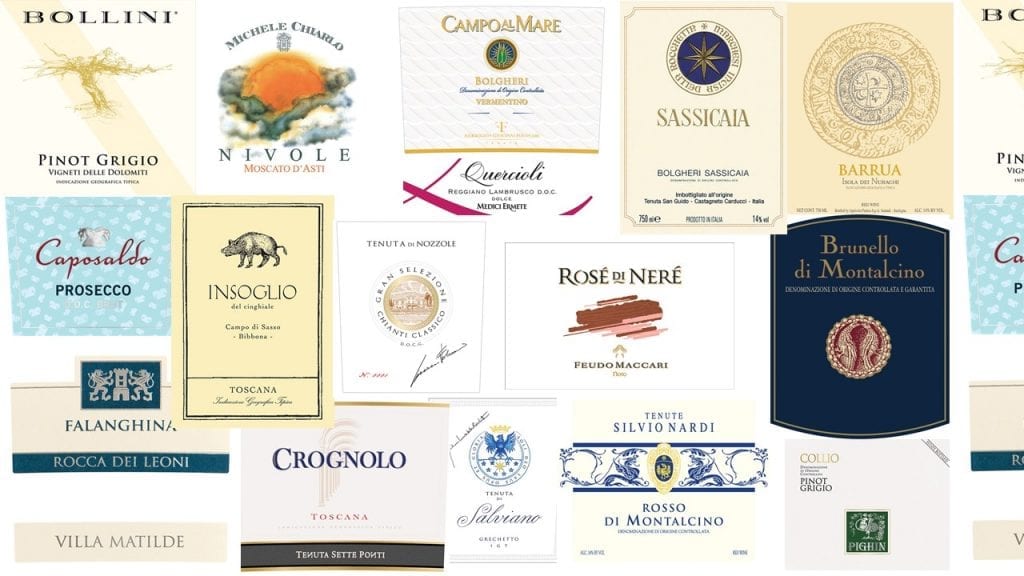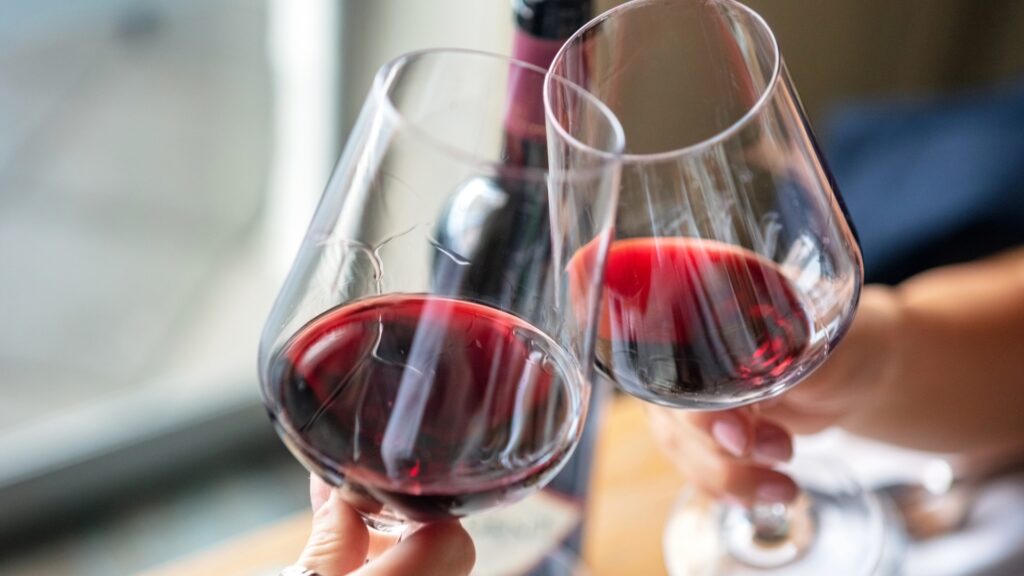With possibly thousands of native grape varieties, winemaking traditions proudly and passionately followed for centuries, and a long history as a fragmented country with cities, towns, and borghi (villages) adhering to their own customs and laws, of course Italian wines and wine labels are complex – much like the Italians and their beautiful country themselves. While it may take years to feel as though you truly know Italian wines back and front, you can begin to decipher them now by understanding the label. And like Italy itself, once you wade through the rules, exceptions, pretty words, and roundabouts, you’ll find the trouble is always worth it.
On Every Italian Wine Label:
Classification, Name of Wine, Producer
Classification
Nearly every bottle of Italian wine that you find in the store will be classified under one of four categories, called appellations or denominations. These are unique to Italy. Other countries do have similar equivalents, but only Italy has these specific denominations, listed below.
The denominations denote more or less strict production and origin controls. This includes yield, where the wines are made, and where the grapes are grown—but they do not definitely indicate the quality, so do not judge by denomination alone. After all, Super Tuscans were once classified on the low end of the totem pole—Vino da tavola—because producers used non-native grape varieties, thereby knocking them out of other tiers. Today, Super Tuscans fall under denominations of Bolgheri DOC, Toscana IGT, and Maremma Toscana IGT and are some of Italy’s most sought-after wines, fetching prices from $50 to $250 a bottle and beyond.
- Vino da tavola (also VdT, but you will more often see the name spelled out) – Table Wine. Grapes can be grown from anywhere in Italy, not necessarily be native Italian varieties, and be produced in any Italian winery. Everyday drinking wine, or a wine that “breaks the rules” (like afore-mentioned Super Tuscans, or a dry Moscato)
- IGT – Indicazione Geografica Tipica; Typical Geographical Indication. The wine is produced in a specific location.
- DOC – Denominazione di Origine Controllata; Denomination of Controlled Origin. Produced in more defined regions and winemakers follow rules designed to preserve the traditional winemaking practices of that region.
- DOCG – Denominazione di Origine Controllata e Garantita; Denomination of Controlled Origin and Guaranteed (quality). Regional delineations are stricter, as are other winemaking rules, such as yields and where the wine is made and bottled. DOCG wines must pass a quality evaluation by a government-certified board.

Name of Wine
The official, typological name of the wine comes before the denomination. A wine is never just called DOC, after all—it is Pinot Grigio Rosato IGT, Bolgheri DOC, Barbaresco DOCG, etc. It might take years before you recognize all the different Italian wines made (to be specific, as of this writing 330 DOC, 77 DOCG, and 118 IGT wines, numbers that increase every year), but knowing that the denomination comes immediately after or underneath helps you see the type.
Additionally, many producers name their wines separately, from imagination—di fantasia. After all, if you had just cared for your vines all year rain-or-shine, hail-or-drought, gone through harvest, vinified and aged and bottled and put your babies on the market, you’d want to name it too, wouldn’t you? It’s like titling a book, designating your work of art, or naming your child; actually, many Italians do name their wines after their children or loved ones!

Winery or Producer
The winery or producer name may be at the top, or the bottom, of the label. There will likely be a logo next to the name and perhaps one of the following words that denote winery:
- Tenuta
- Cascina
- Azienda / Azienda Agricola / Azienda Vitivinicola
- Castello
- Cantina
Other Common Words and Descriptions on an Italian Wine Label
In addition to the denomination, other words may be added to the label that further categorize the wine’s style and quality. The most common you’ll see are:
- Classico: This is the historic center of a wine region, like Chianti Classico. These are usually the best sites and produce top-quality wine.
- Riserva: This means that a DOC or DOCG wine has a higher level of alcohol and has been aged longer than the classic denomination stipulates.
- Superiore: This also indicates a higher level of alcohol, lower grape yield (thus higher quality and concentration of color, flavor, and sugars in the grapes), and longer aging time.
- Gran Selezione: Only for Chianti. The main differentiator is that 100% of the grapes must be grown on the property of the producer whose name appears on the label, and longer aging.
And finally, the vineyard name, hill, wine region, or sub-region might make an appearance on the label. The best way to understand if a random word on the label is one of these is by process of elimination—is it the wine type, winery name, or any of the above words?—and by understanding Italian wines.
And the best way to do that, of course, is by drinking more Italian wine.




